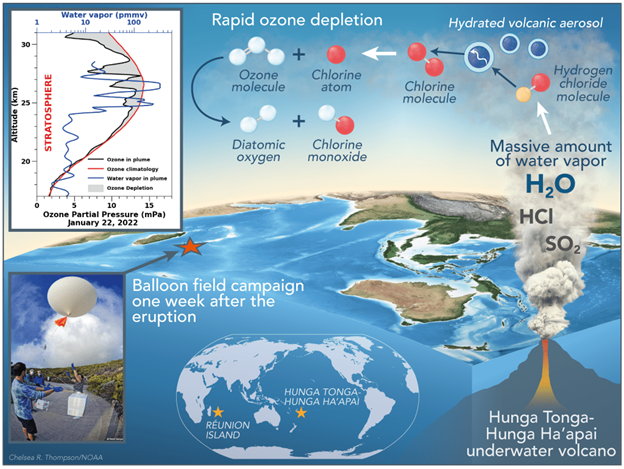Recently, several media outlets claimed that June 2024 was the hottest June on record globally and that it topped off a string of 12 or 13 warmer than normal months, which they blamed on human-induced climate change. Each of the news stories made false claims of reaching climate tipping points, extreme weather events, and that the extended streak of hot temperatures proved a “climate crisis” was at hand.
Here are some of the headlines: Temperatures 1.5C above pre-industrial era average for 12 months, data shows (The Guardian,) June sizzled to a 13th straight monthly heat record, but July might break string (National Public Radio,) and World in line for hottest year as 1.5C limit breached for 12 months in a row (Financial Times.)
That ongoing 1.5C temperature limit scare-story has people around the world rattled. For example, this infographic from The Asia-Pacific branch of the International Union of Food workers (IUF) says (bold author’s):
Global warming caused by human activities reached approximately 1°C over the past 170 years, increasing at 0.2°C per decade. Scientists warn that an average rise of more than 1.5°C in the surface temperature of the earth compared to pre-industrial levels will be catastrophic for the environment and human health.
But despite 12 months of the globe being above the so-called temperature limit, nothing bad happened on a global scale. Claims of climate catastrophe once we passed the so-called 1.5C temperature limit, never happened. The limit was nothing more than a political talking point from the 2015 Paris Climate Conference, as described in this Associated Press article: The magic 1.5: What’s behind climate talks’ key elusive goal. The AP wrote, “in a way both the ‘1.5 and 2 degree C thresholds are somewhat arbitrary,’ Stanford University climate scientist Rob Jackson said in an email. ‘Every tenth of a degree matters!’”
Now, despite surpassing that arbitrary limit, the “crisis” progressive politicians and alarmists in the mainstream media have been warning about failed to materialize.
First let’s check the global temperature. The source of all these news stories comes from a recent press release by Copernicus, part of the European Commission. A graph by Copernicus, seen in Figure 1 below, illustrates the “limit” and the 12-month temperature peak:

Note the sharp peak in Figure 1 topping out at 1.63°C. In Figure 2 below, there’s detail provided by Copernicus concerning the year-long peak of temperature.

Note in Figure 2 that global temperature is already coming down from the peak that occurred 5 months ago. Soon, it will likely be below the 1.5°C mark.
As you can see in Figure 1 and confirmed in Figure 2, this sharp upshoot of temperature is unlike anything prior in the temperature record. It makes you wonder; why? Did mankind suddenly go on a fossil fuel burning blitz to create more carbon dioxide in a single year?
No, but there was a unique volcanic eruption. According to this article from NASA Research, A volcanic eruption sent enough water vapor into the stratosphere to cause a rapid change in chemistry. They say:
The eruption of the Hunga Tonga-Hunga Ha’apai volcano on January 15, 2022, produced the largest underwater explosion ever recorded by modern scientific instruments, blasting an enormous amount of water and volcanic gases higher than any other eruption in the satellite era.
In case you didn’t know, NASA also says in this article Steamy Relationships: How Atmospheric Water Vapor Amplifies Earth’s Greenhouse Effect that water vapor is the most powerful greenhouse gas:
Water vapor is Earth’s most abundant greenhouse gas. It’s responsible for about half of Earth’s greenhouse effect — the process that occurs when gases in Earth’s atmosphere trap the Sun’s heat. Greenhouse gases keep our planet livable. Without them, Earth’s surface temperature would be about 59 degrees Fahrenheit (33 degrees Celsius) colder.
So, imagine for the first time in history since humans have been able measure such a thing, the eruption of the Hunga Tonga volcano injected massive, megaton levels (146 metric megatons) of water vapor into the stratosphere never seen before. See Figure 3 below.

According to a scientific paper published shortly after the eruption, “Observations from the Microwave Limb Sounder (MLS) aboard the NASA Aura satellite immediately following the eruption indicated that this single event increased water vapor in Earth’s normally dry stratosphere by approximately 10%.” With that much extra water vapor (the strongest greenhouse gas) injected into the atmosphere, global warming was guaranteed.
Another scientific article titled Tonga Eruption May Temporarily Push Earth Closer to 1.5°C of Warming said, “The underwater eruption of Hunga Tonga–Hunga Ha’apai sent megatons of water vapor into the stratosphere, contributing to an increase in global warming over the next 5 years.”
In addition, there was immediate ozone depletion in the upper atmosphere. NASA Research says: “Our measurements showed that stratospheric ozone concentrations decreased rapidly – by as much as 30% in air with the highest water vapor concentrations – in the immediate wake of the eruption.”
The EPA says, “The ozone layer in the stratosphere absorbs a portion of the radiation from the sun, preventing it from reaching the planet’s surface.” So, with less ozone, more sunlight reached the surface of the planet than it usually does, and the extra energy hangs around in the atmosphere due to the increased water vapor in the role of a greenhouse gas. The eruption had a double-whammy effect on Earth’s atmosphere, you could have bet your bottom dollar that the planet would get warmer as a result.
And it did. This completely natural volcanic event created the spike in temperature to 1.63°C seen in Figure 1. Meanwhile the media, whether out of unintentional or willful ignorance, remains oblivious to how the atmosphere responded to the volcano. Accordingly, they are still writing misleading scare stories, blaming humans for the recent increase in temperature due to their use of modern energy and transportation, such as what CNN wrote in a recent article about the spike in global temperature:
The climate crisis is driven primarily from humans burning coal, oil and gas for energy. El Niño, a natural climate pattern that originates in the Pacific Ocean, has also boosted temperatures in much of the world in recent months.
No mention of the volcano or resultant water vapor blast letting humans off the hook. Surprised? Don’t be. This shameless pattern of “the world is getting hotter and it is your fault” has been repeated over and over again by the media for years. When evidence that humans are not at fault for the current warming spike is widely and easily available, the media ignores it. Even though nothing bad happened on a global scale from the Hunga-Tonga volcanic event, they seem even more focused on the false narrative of a “climate crisis,” rather than factual reporting. It’s shameful and wrong.
Meanwhile, the much warned about 1.5C temperature increase was exceeded for an entire year, yet extreme weather events and the numbers of deaths due to temperature and weather did not see an unusual increase. This undermines years of assertions by the mainstream media who’ve claimed that more severe and more frequent extreme weather events and more deaths would be the inevitable result of exceeding the 1.5C temperature increase threshold. Chalk that up to one more in a long-train of failed predictions.
What will the media say in a couple of years when temperatures go back down as the extra water vapor dissipates and the ozone returns to normal? Perhaps they’ll embrace Emily Littela with a collective “never mind!”




















